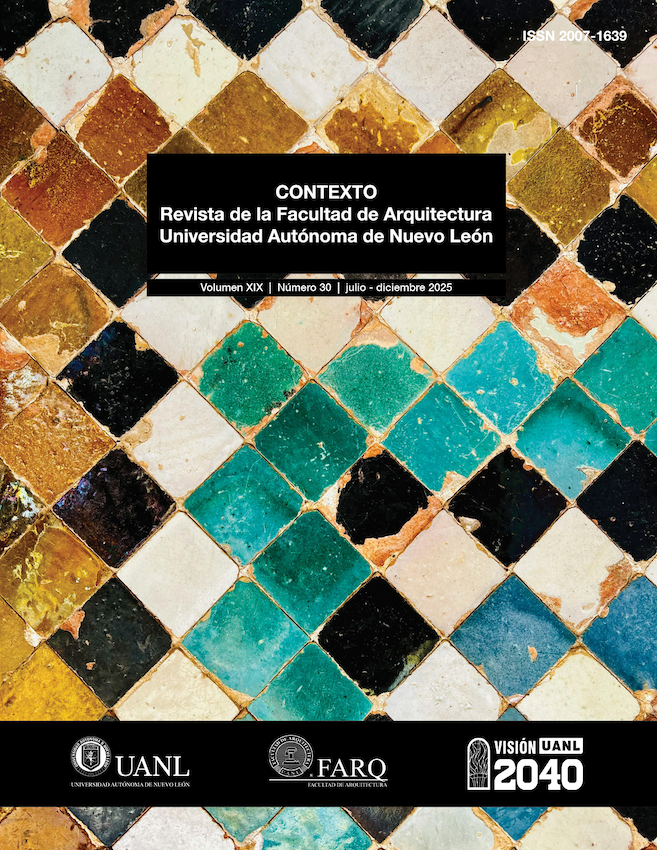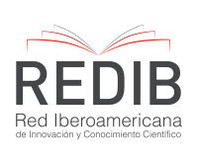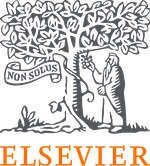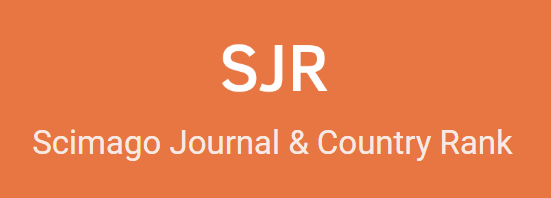Telling the Legend
a transmedia strategy for the collective reconstruction of urban memory
DOI:
https://doi.org/10.29105/contexto19.30-453Keywords:
urban memory, interactive design, co-creation, transmedia storytellingAbstract
This article proposes a transmedia strategy that contributes to processes of reconstruction and appropriation of urban memory through the interrelation of four key memory categories: cultural memory, material memory, social memory, and living memory. In this approach, each category represents a thread in the fabric of the city—a woven history created, appropriated, and transmitted by the community itself.
Cultural memory identifies the symbols and expressions that have shaped the collective identity of the territory. Material memory emphasizes the objects and places that preserve memory and reinforce emotional connections with inhabitants. Social memory, understood as collective historical consciousness, encompasses both dominant and marginal narratives and highlights the power structures involved in the construction of memory. Living memory focuses on the active, dynamic, and situated dimension of memory as it is recreated by local actors through dialogue and interaction.
This strategy was implemented in a pilot study in the city of Bucaramanga, Colombia, using the site known as “La Casa del Diablo” as a narrative anchor. This location preserves the physical space of a former hacienda and holds an urban legend from the late 19th century, which served as a catalyst for the co-creative process. Cuenta la leyenda is the name of the digital platform designed to host multiple urban memory nodes, built through this strategy’s implementation, which integrates co-creation workshops, narrative development, and interactive modules. This initial stage revealed how a single story can activate intergenerational memories, strengthen territorial belonging, and generate new collective representations of urban space.
Downloads
References
Alcaldía de Bucaramanga, (s.f.). Bucaramanga. Recuperado el 2023, de Alcaldía de
Bucaramanga: https://www.bucaramanga.gov.co/otros/mi-ciudad/
BELTRÁN-ARISMENDI C. (2020). Enfoques emergentes desde las artes y el diseño para
la teorización y creación de experiencias transmedia. Aproximación desde el
metaanálisis de publicaciones científicas. Arte, Individuo y Sociedad, 32(4), 1039-
1064. https://doi.org/10.5209/aris.66552 DOI: https://doi.org/10.5209/aris.66552
Departamento Administrativo Nacional de Estadística DANE. (2018). Resultados y
proyecciones (2018-2020) del censo 2018.
https://www.dane.gov.co/index.php/estadisticas-por-tema/demografia-y-
poblacion/censo-nacional-de-poblacion-y-vivenda-2018
DURKHEIM, E. (2000). Sociología y filosofía. Miño y Dávila Editores.
FOUCAULT, M. (1969/2016). La arqueología del saber. (A. Garzón del Camino, Trad.).
Siglo XXI Editores.
GÓMEZ, A. A. (2020). Ciudad – Paisaje. Sostenibilidad urbana del paisaje como
patrimonio biocultural. En: Lecturas de la singularidad territorial a partir del
paisaje cultural. Universidad Pontificia Bolivariana.
GÓMEZ, A. A. (2015). Talleres comunitarios para la apropiación social del patrimonio en
el Paisaje Cultural Cafetero, como estrategia para un modelo de diseño ecoeficiente.
Dearq, 1(16), 134–145. https://doi.org/10.18389/dearq16.2015.09 DOI: https://doi.org/10.18389/dearq16.2015.09
GÓMEZ, A.A.; LONDOÑO, F.C. (2011). Paisajes y Nuevos Territorios (en Red).
Cartografías e interacciones en entornos visuales y virtuales. Anthropos Editorial.
HARVEY, D. (1990/2019). La condición de la posmodernidad: Investigación sobre los
orígenes del cambio cultural. (M. Eguía, Trad.). Amorrortu editores.
JENKINS, H. (2008). Cultura de la convergencia. La mutación de los medios de
comunicación. Paidós.
JODELET, D. (2018). Ciencias sociales y representaciones: Estudio de los fenómenos
representativos y de los procesos sociales. De lo local a lo global. Revista
Latinoamericana de Metodología de las Ciencias Sociales, 8 (2), e041. En Memoria
Académica. http://dx.doi.org/10.24215/18537863e041 DOI: https://doi.org/10.24215/18537863e041
LYNCH, K. (2008). La imagen de la ciudad. Gustavo Gili.
NORA, P. (2008). Les lieux de mémoire. (L. Masello, Trans.). Trilce. (Trabajo original
publicado en 1984)
OLALQUIAGA, C. (2007). El reino artificial. Sobre la experiencia kitsch. Barcelona:
Gustavo Gili
SANDERS, E. B.-N., & STAPPERS, P. J. (2008). Co-creation and the new landscapes of
design. CoDesign: International Journal of CoCreation in Design and the Arts,
4(1), 5-18. https://doi.org/10.1080/15710880701875068 DOI: https://doi.org/10.1080/15710880701875068
SALGUERO, C.; GÓMEZ A. A. (2023). Metaterritorio para la restitución simbólica de la
memoria habitada desde el diseño. Kepes, 20(27), 429–461.
https://doi.org/10.17151/kepes.2023.20.27.15 DOI: https://doi.org/10.17151/kepes.2023.20.27.15
SAUSSURE, F. (1994). Curso de lingüística general (27a ed.). Editorial Losada.
SCOLARI, C. (2013). Narrativas transmedia: cuando todos los medios cuentan. Deusto
S.A. Ediciones.
SILVA, A. (2006). Imaginarios urbanos. Arango editores.
Downloads
Published
How to Cite
Issue
Section
License
Copyright (c) 2025 Diana Marcela Figueroa Quiroga, Adriana Gómez Alzate

This work is licensed under a Creative Commons Attribution-NonCommercial 4.0 International License.
The authors who publish in this journal accept the following conditions:
1. The authors keep the copyright and give the journal the right of the first publication, with their content registered under the Creative Commons License, which lets third parties to use the published material as long as they mention the authors and the first publication from the journal.
2. The authors can make other independent and additional contractual agreements for the non-exclusive distribution of the version of the article published in the journal (for example an institutional repository or a book) provided that they explicitly mention that the content was first published in CONTEXTO. Revista de la Facultad de Arquitectura de la Universidad Autónoma de Nuevo León..














.png)





